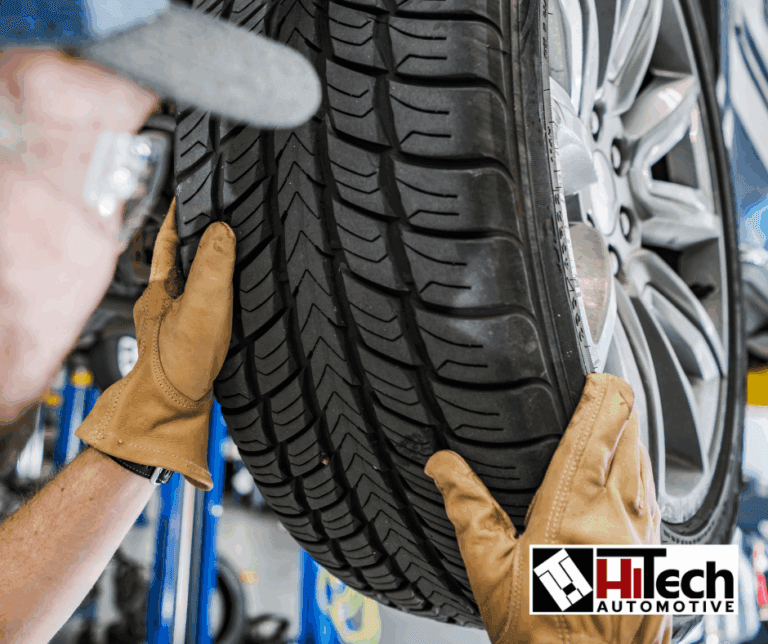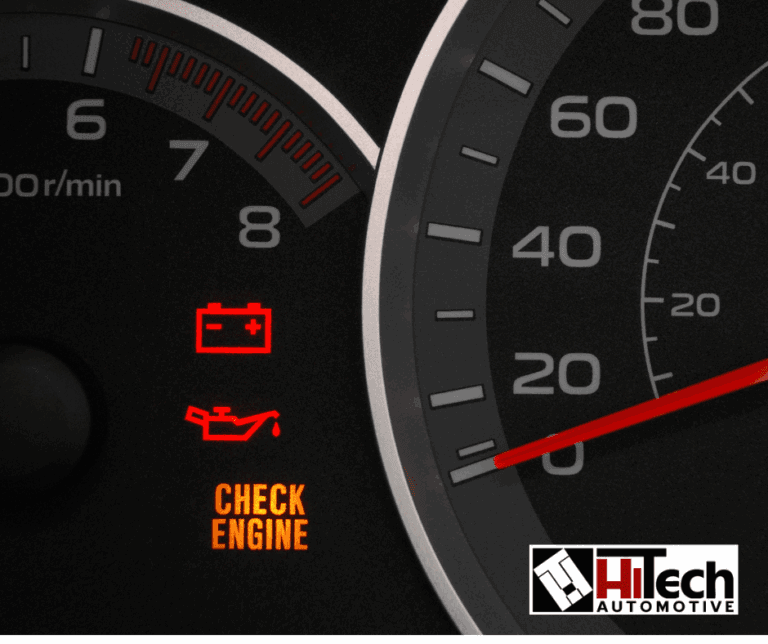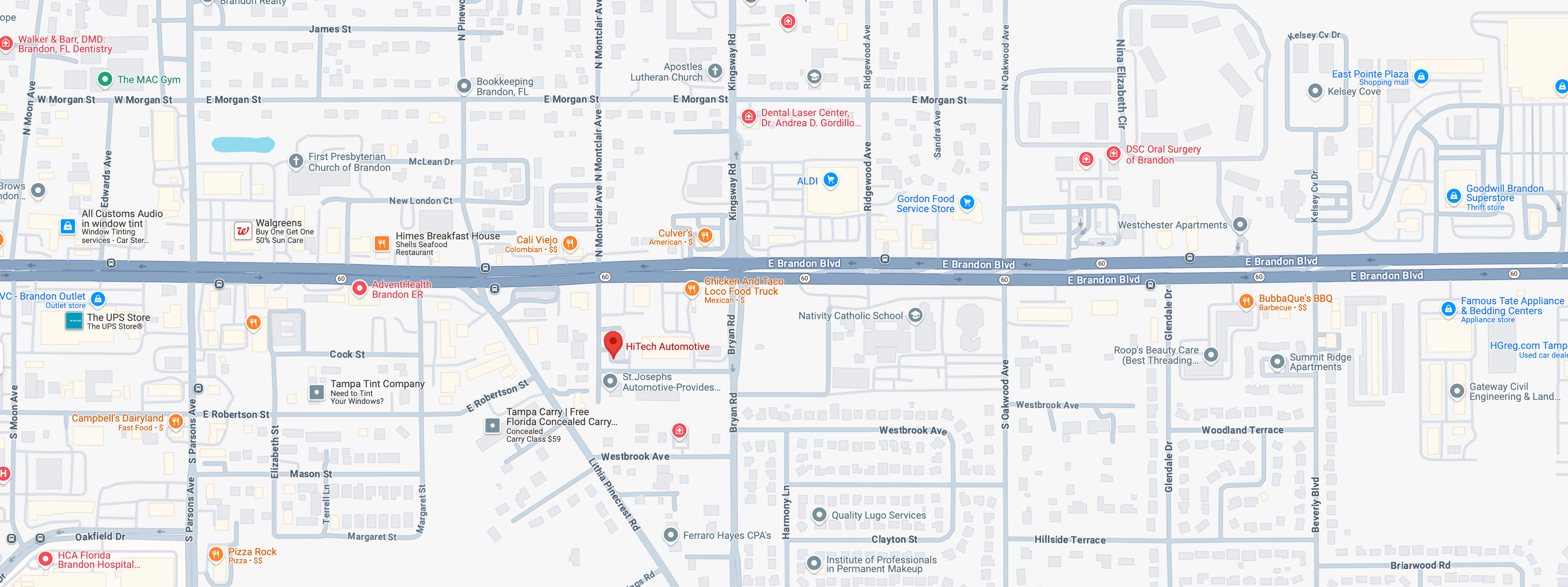Your tires are the only part of your vehicle that make direct contact with the road. They play a critical role in your car’s performance, handling, fuel efficiency, and most importantly—your safety. That’s why tire wear isn’t something you can afford to ignore. Uneven tread, bald spots, or strange patterns often point to a deeper issue. If you’re experiencing tire trouble, it may be your vehicle’s way of asking for attention.
At HiTech Automotive, we want drivers to be informed, proactive, and confident on the road. Knowing what causes tire wear and how to spot the symptoms can help you avoid expensive repairs, improve safety, and extend the life of your tires.
What Causes Tire Wear?
Tires naturally wear down over time, but when the wear is uneven or excessive, it usually signals a mechanical problem or poor maintenance habits. Here are some of the most common causes of tire wear:
1. Improper Inflation
One of the leading causes of tire trouble is incorrect air pressure. Overinflated tires tend to wear more in the center, while underinflated tires wear more on the edges. Both situations reduce traction, fuel efficiency, and the overall lifespan of your tires.
2. Wheel Misalignment
If your wheels are not properly aligned, your tires will wear unevenly. Misalignment can happen after hitting a pothole, curb, or simply from regular wear and tear over time. Left unchecked, misalignment can quickly ruin a good set of tires.
3. Worn Suspension Components
The suspension system helps keep your vehicle stable and your tires firmly planted on the road. When shocks or struts wear out, your tires may develop scalloped or cupped tread patterns. This type of wear not only shortens tire life but can also cause vibrations and reduced handling.
4. Driving Habits
Hard braking, aggressive cornering, and fast acceleration can all contribute to premature tire wear. High-speed driving generates more heat and friction, wearing down the tread faster. Safe, smooth driving goes a long way toward protecting your tires.
5. Improper Tire Rotation
Front and rear tires wear at different rates due to the differences in weight distribution and steering. Without regular rotation (every 5,000 to 7,000 miles), your tires can develop uneven patterns that compromise performance.
Common Tire Wear Patterns
Understanding how your tires are wearing can reveal what might be going wrong with your vehicle. Here are some patterns to look out for:
Center Wear
This usually means your tires are overinflated. Too much air pressure causes the center of the tire to bear more of the load, leading to faster wear in the middle.
Edge Wear
If both inner and outer edges are wearing faster than the center, it’s a sign of underinflation. This puts too much pressure on the outer parts of the tread.
One-Sided Wear
When just the inner or outer edge of the tire is worn, it’s typically a result of poor alignment. This can affect your handling and increase your risk of a blowout.
Feathering
Feathering occurs when the tread ribs develop a rounded edge on one side and a sharp edge on the other. It’s often caused by misalignment or worn suspension parts.
Cupping or Scalloping
This uneven wear pattern looks like dips or scoops in the tread. It’s a classic symptom of suspension issues or unbalanced tires.
Signs You Have Tire Trouble
Sometimes the problem isn’t obvious just by looking at your tires. Here are some other signs that indicate tire trouble:
Vibration or shaking while driving, especially at higher speeds
Poor handling or pulling to one side
Increased braking distance
Unusual noises from your tires or suspension
Frequent air loss in one or more tires
If you’re noticing any of these issues, it’s time to have your vehicle inspected by a professional. Ignoring tire trouble can lead to serious safety risks and more costly repairs down the road.
Preventing Tire Wear Problems
The good news is that most tire wear issues can be prevented with regular maintenance. Here’s how you can stay ahead of the problem:
Check Tire Pressure Monthly
Use a reliable tire gauge and compare the readings with the recommended pressure in your owner’s manual or door jamb. Don’t forget to check the spare tire, too.
Rotate Tires Regularly
To ensure even wear, have your tires rotated every 5,000 to 7,000 miles. This helps distribute wear evenly across all four tires.
Schedule Wheel Alignments
Get your alignment checked at least once a year, or if you notice uneven tire wear or steering issues. Even small alignment problems can cause major tire trouble over time.
Inspect Tread Depth
Use the penny test: Insert a penny into your tread groove with Lincoln’s head facing down. If you can see the top of his head, your tread is too low, and it’s time to replace the tire. To learn more about the penny test, click here.
Keep Up With Suspension Maintenance
Have your shocks and struts inspected regularly, especially if you notice a rough or bouncy ride. Worn suspension components can lead to rapid and uneven tread wear.
Trust HiTech Automotive With Your Tires
At HiTech Automotive, we understand how important your tires are to your vehicle’s safety and performance. Our expert technicians can quickly identify the cause of your tire trouble and recommend the right solution—whether it’s balancing, alignment, suspension repair, or a new set of tires.
Don’t let tire trouble catch you off guard. Schedule an inspection with HiTech Automotive today by clicking here and drive with confidence, knowing your vehicle is in top shape from the tread up.












